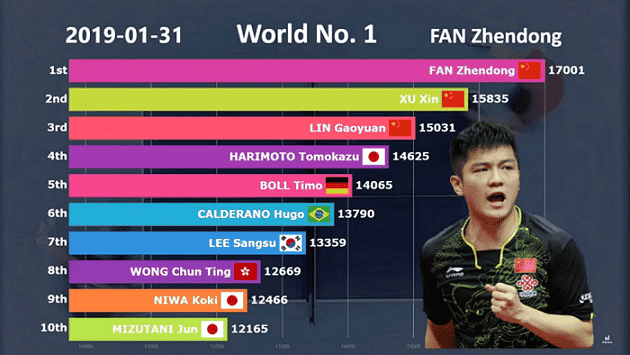SANWEI provides professional table tennis gear to players since 1993. SANWEI is known for introducing innovative innovations into the table tennis world. The brand’s team of engineers and researchers are constantly pushing the limits of technology in order to create cutting-edge products which enhance the performance of players and elevate their game.
Doubles techniques build upon singles techniques, sharing many of their basic skills. Due to differences between competition rules in doubles and singles tennis, however, doubles techniques feature distinct aspects.
Below is an introduction to several major doubles techniques.
Table of Contents
Doubles Positioning
Position, movement, hitting and stance in doubles tennis are inextricably linked. Effective positioning facilitates convenient movements with swift hitting that promote effective stance – all essential elements to player performances – while improper placement could impede one partner from hitting effectively or cause collisions altogether.
- Server and Partner Positioning
(2) Front-Back Positioning Primarily used when a player with a chopping and attacking style serves. The server stands slightly forward and to the right, while the partner stands in the center slightly behind.
- Receiver and Partner Positioning
(1) Parallel Positioning Primarily used when one player holds the racket on the left and the other on the right for an offensive return of serve. The receiver stands to the right near the net, giving up 3/4 of the space to the partner to control the table and prepare for the return. When an offensive player uses a backhand to return the serve, parallel positioning is also suitable.
(2) Front-Back Positioning
(i) Used when an offensive player uses a forehand to return the serve. The receiver stands slightly to the right near the net to facilitate a forehand attack, while the partner stands slightly behind and off-center.
(ii) Used when a player with a chopping and attacking style uses a forehand or backhand to return the serve. The receiver stands slightly to the right near the net, while the partner stands slightly behind and off-center.
Doubles Movement
- Figure-eight Movement Pattern
This movement method is often used by players who hold the racket in their left and right hands. Both players move diagonally towards their backhand side after hitting the ball.
- Circular Movement Pattern
This movement method is often used by pairs of players who both hold the racket in their right hand. After one player hits the ball, they move towards the right rear, circling behind their partner. When the partner moves in to hit the ball diagonally, they adjust their position in time to prepare for the next shot.
- T-shaped Movement Pattern
This movement method is often used by pairs employing fast attack and chop techniques, fast attack and looping techniques, two chop techniques, and left push and right attack with mid to long table attack techniques. Players near the table mainly move laterally, while players away from the table mainly move forward and backward.
- Figure-eight Movement Pattern
When the opponents consciously target one player on our side and hit the ball to both corners, their movement pattern often forms a horizontal figure-eight.
The above are just several basic movement patterns for doubles footwork. In actual play, it is necessary to flexibly apply them according to various changes in the game and the situation of the incoming ball.
Doubles Serving and Receiving
- Doubles Serving
Because the serving area is fixed, the receiver can position themselves and wait, which places higher demands on the server. When serving, one should strive to use high-quality serves to score directly or control the opponent’s first shot, making the serve advantageous for one’s partner’s attack.
Common serving methods include the following:
(1) Serving a short ball close to the centerline of the net (primarily with topspin or sidespin, combined with a no-spin serve) to control the opponent. However, when the receiver holds the racket in their left hand, they should serve a short ball near the right sideline of the net.
(2) Serving a right-sided topspin (or backspin) to force the opponent to return the ball to the left (or middle) side of the table, narrowing the range of movement for the partner’s shot.
(3) Serving a fast and long ball to the opponent’s right corner or near the middle line, forcing the opponent to move and increasing the difficulty of their return, thus reducing the quality of their shot.
- Doubles Receiving
The techniques used in doubles receiving are the same as in singles, including pushing, attacking, looping, chopping, blocking, flicking, and short placement. Due to the serving area’s constraints, receiving is done in the right half of the table, which is less challenging than in singles and requires less coverage.
Therefore, receiving should emphasize being proactive, striving to attack or create attacking opportunities for one’s partner. Common receiving methods include the following:
(1) Seizing the opportunity to directly attack or counterattack.
(2) Returning the ball to the opponent’s weak spots to limit their attack.
(3) Primarily hitting the ball diagonally to the opponent’s right corner or returning a short ball near the net to disrupt the opponent’s position and create difficulties in their shot.
(4) Primarily hitting backhand shots and diagonal returns, combined with returning short balls near the net to control the opponent and create attacking opportunities for one’s partner.


